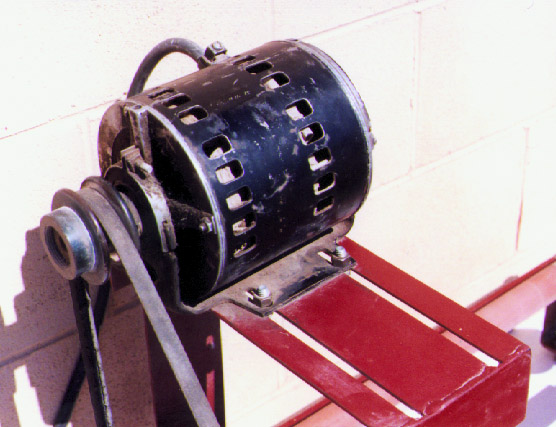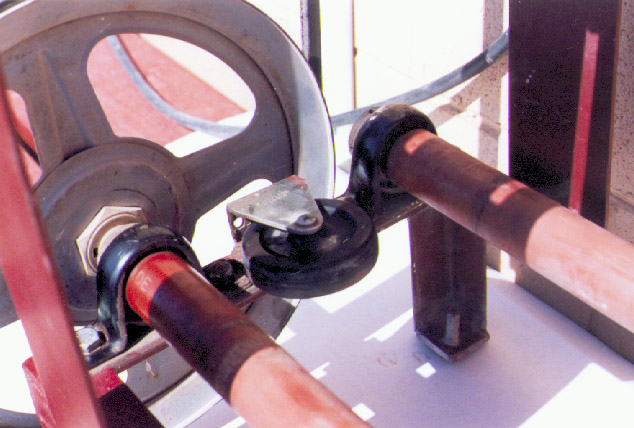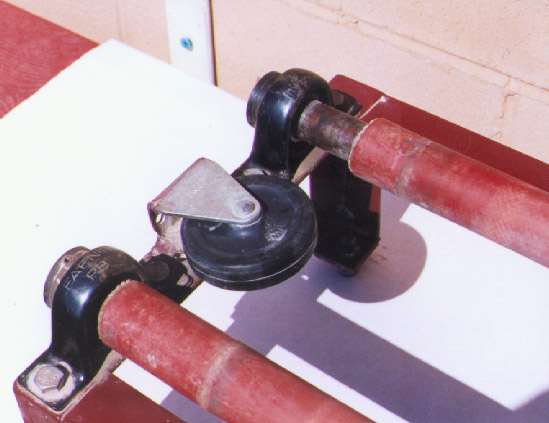| Monthly Tech-Tip | No tracking! No ads! | |
A Low Cost Tester of Glaze Melt Fluidity
A One-speed Lab or Studio Slurry Mixer
A Textbook Cone 6 Matte Glaze With Problems
Adjusting Glaze Expansion by Calculation to Solve Shivering
Alberta Slip, 20 Years of Substitution for Albany Slip
An Overview of Ceramic Stains
Are You in Control of Your Production Process?
Are Your Glazes Food Safe or are They Leachable?
Attack on Glass: Corrosion Attack Mechanisms
Ball Milling Glazes, Bodies, Engobes
Binders for Ceramic Bodies
Bringing Out the Big Guns in Craze Control: MgO (G1215U)
Can We Help You Fix a Specific Problem?
Ceramic Glazes Today
Ceramic Material Nomenclature
Ceramic Tile Clay Body Formulation
Changing Our View of Glazes
Chemistry vs. Matrix Blending to Create Glazes from Native Materials
Concentrate on One Good Glaze
Copper Red Glazes
Crazing and Bacteria: Is There a Hazard?
Crazing in Stoneware Glazes: Treating the Causes, Not the Symptoms
Creating a Non-Glaze Ceramic Slip or Engobe
Creating Your Own Budget Glaze
Crystal Glazes: Understanding the Process and Materials
Deflocculants: A Detailed Overview
Demonstrating Glaze Fit Issues to Students
Diagnosing a Casting Problem at a Sanitaryware Plant
Drying Ceramics Without Cracks
Duplicating Albany Slip
Duplicating AP Green Fireclay
Electric Hobby Kilns: What You Need to Know
Fighting the Glaze Dragon
Firing Clay Test Bars
Firing: What Happens to Ceramic Ware in a Firing Kiln
First You See It Then You Don't: Raku Glaze Stability
Fixing a glaze that does not stay in suspension
Formulating a body using clays native to your area
Formulating a Clear Glaze Compatible with Chrome-Tin Stains
Formulating a Porcelain
Formulating Ash and Native-Material Glazes
G1214M Cone 5-7 20x5 glossy transparent glaze
G1214W Cone 6 transparent glaze
G1214Z Cone 6 matte glaze
G1916M Cone 06-04 transparent glaze
Getting the Glaze Color You Want: Working With Stains
Glaze and Body Pigments and Stains in the Ceramic Tile Industry
Glaze Chemistry Basics - Formula, Analysis, Mole%, Unity
Glaze chemistry using a frit of approximate analysis
Glaze Recipes: Formulate and Make Your Own Instead
Glaze Types, Formulation and Application in the Tile Industry
Having Your Glaze Tested for Toxic Metal Release
High Gloss Glazes
Hire Us for a 3D Printing Project
How a Material Chemical Analysis is Done
How desktop INSIGHT Deals With Unity, LOI and Formula Weight
How to Find and Test Your Own Native Clays
I have always done it this way!
Inkjet Decoration of Ceramic Tiles
Is Your Fired Ware Safe?
Leaching Cone 6 Glaze Case Study
Limit Formulas and Target Formulas
Low Budget Testing of Ceramic Glazes
Make Your Own Ball Mill Stand
Making Glaze Testing Cones
Monoporosa or Single Fired Wall Tiles
Organic Matter in Clays: Detailed Overview
Outdoor Weather Resistant Ceramics
Painting Glazes Rather Than Dipping or Spraying
Particle Size Distribution of Ceramic Powders
Porcelain Tile, Vitrified Tile
Rationalizing Conflicting Opinions About Plasticity
Ravenscrag Slip is Born
Recylcing Scrap Clay
Reducing the Firing Temperature of a Glaze From Cone 10 to 6
Setting up a Clay Testing Program in Your Company
Simple Physical Testing of Clays
Single Fire Glazing
Soluble Salts in Minerals: Detailed Overview
Some Keys to Dealing With Firing Cracks
Stoneware Casting Body Recipes
Substituting Cornwall Stone
Super-Refined Terra Sigillata
The Chemistry, Physics and Manufacturing of Glaze Frits
The Effect of Glaze Fit on Fired Ware Strength
The Four Levels on Which to View Ceramic Glazes
The Majolica Earthenware Process
The Potter's Prayer
The Right Chemistry for a Cone 6 MgO Matte
The Trials of Being the Only Technical Person in the Club
The Whining Stops Here: A Realistic Look at Clay Bodies
Those Unlabelled Bags and Buckets
Tiles and Mosaics for Potters
Toxicity of Firebricks Used in Ovens
Trafficking in Glaze Recipes
Understanding Ceramic Materials
Understanding Ceramic Oxides
Understanding Glaze Slurry Properties
Understanding the Deflocculation Process in Slip Casting
Understanding the Terra Cotta Slip Casting Recipes In North America
Understanding Thermal Expansion in Ceramic Glazes
Unwanted Crystallization in a Cone 6 Glaze
Using Dextrin, Glycerine and CMC Gum together
Volcanic Ash
What Determines a Glaze's Firing Temperature?
What is a Mole, Checking Out the Mole
What is the Glaze Dragon?
Where do I start in understanding glazes?
Why Textbook Glazes Are So Difficult
Working with children
Make Your Own Ball Mill Stand
Description
Pictures of a ball mill rack that you can make yourself
Article
No industrial plant that mixes its own raw glazes would be without a ball mill. Yet potters lack them for a couple of reasons: Expense and awareness.
A ball mill is a porcelain jar a little more than half filled with porcelain balls (they can also be alumina or natural stones). Glaze is poured in, a lid secured, and it is rotated on a motorized rack (often for hours). The tumbling of the balls within grinds particles smaller and smaller. The creamier glaze applies better, has more stable viscosity, fires more consistently and cleaner with less specks and imperfections (eg. pinholes and blisters), and melts better. Ball mills also enable you to employ native materials.
Jar: Jars need to be heavy and strong. They are expensive, a 1 gallon jar typically costs about $100 US and weighs 15+ pounds. These jars are not easy to make. They must have a water tight lid. A jar must be a true cylinder or it won't rotate without hopping in the rack. They are not glazed on the inside. They are best made by casting a low shrinkage porcelain (it would be extremely difficult to dry and fire a thick thrown perfect cylinder shape made from a plastic porcelain). Typically small jars have a range of ball diameters from 1-4 cm. The pebbles cost about $6 US per pound and you need about 10+ lbs for a 1 gallon jar.
Rack: A rack (or stand) costs $700-1300 US. However you can build your own for much less.
Front and Back View
Unit weighs about 50 pounds. The lower assembly is welded from angle iron, the upper from 1/8" flat steel.


Motor
One rod is longer and extends out the other side of the bearing for the large pulley to mount on. It is driven by a 1/4 hp 1725 rpm electric furnace motor (this type of motor is mass-produced and inexpensive). The motor does run quite warm.


Pulleys & Rollers
The pulley ratio is about 5.5:1. The large is a self locking mount type. The rotating rods are 1" cold roll. Hydraulic hose with slightly less than 1" inside diameter has been pulled over the rod to grip the jar and make it run smoothly. Apply grease to the rod if the hose is difficult to pull on.


Casters
Use a caster wheel welded sideways at both ends to keep the rotating jar on center (the jar needs an unobstructed shoulder to ride against these casters).


Bearings
Four pillow block bearings hold 1" cold roll steel rods in place. The rods are far enough apart so that the shoulder of the jar runs low enough to contact the caster wheels.

Legs and Feet
Thread bolts into the feet as shown so the rack can be leveled and to prevent it from rocking on the floor.


General Notes
- You can use a vertical-sided plastic jar in a pinch, the grinding action between the jar walls and balls is lost but the balls will still crush the particles between them if you mill for longer periods. Wine making carbuoys are good also since they are very straight cylinders that will roll without hopping in the stand.
- The jar must be cylindrically true or it will rock and hop while turning.
- Fill the jar 55% with balls.
- The jar should not turn too quickly (about 30 RPM).
Related Information
Ball mill jar and rack made by @andygravesstructures

This picture has its own page with more detail, click here to see it.
Links
| Glossary |
Ball milling
A method of grinding particles in ceramic powders and slurries. A porcelain, metal or rubber vessel filled with pebbles tumbles and particles are ground between colliding pebbles. |
| Articles |
Ball Milling Glazes, Bodies, Engobes
Industries ball mill their glazes, engobes and even bodies as standard practice. Yet few potters even have a ball mill or know what one is. |
| By Tony Hansen Follow me on        |  |
Got a Question?
Buy me a coffee and we can talk

https://digitalfire.com, All Rights Reserved
Privacy Policy
